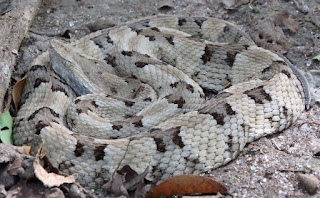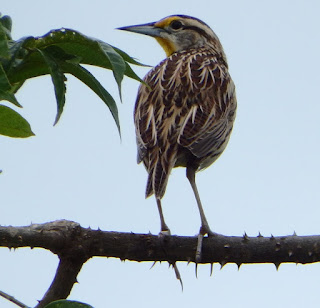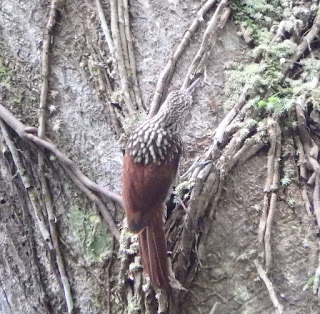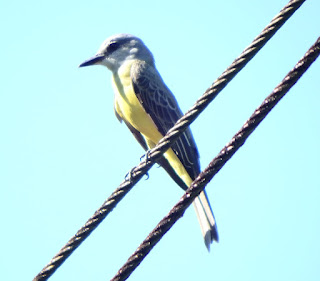Much like planning our trip to Africa, we put a lot of
thought into the experience we wanted to have for visiting the white continent.
Choosing
an expedition company and a ship:
We knew we didn’t want “a drive-by cruise” on a typical
cruise ship. We love the typical cruise ship experience, but generally they
rely on one shot (maybe 2) at getting a flight onto the Antarctic peninsula or
a smaller boat making a landing depending on weather with really over-priced
excursions just to spend a couple of hours there, with many people saying they
didn’t get to go at all. If this isn't important to you, then a shorter more luxurious trip on a typical cruise ship would be your best option.
We wanted an expedition icebreaker ship with around 100
passengers since Antarctica has a 100 person at a time limit on shore at a
time. Larger ships rotate the groups and you spend less time exploring on land
and by zodiac.
How long the cruise should be was another consideration.
The shorter ones didn’t go to South Georgia which is considered to be the
Galapagos of the South for their diverse and plentiful wildlife or they skipped
the Falklands and maybe had only one shot to make the landing on the peninsula.
Plus, it was a long way to go and crossing the "dreaded" Drake Passage for just a
few days really didn’t make a lot of sense to us. So, we opted for a longer cruise
with 23 days on Quark that includes the Falkland Islands (Islas Malvinas), South
Georgia Islands and it crosses the Antarctic Circle. We will have several days
to attempt landings on the continent. Quick trips are fine to “tick the box” to
say you’ve been there (nothing wrong with that either), but we want to actually
experience it up close and personal and have more time to just be with the
animals and watch their behavior. We want to be close to penguins waddling or tobogganing
by and hear them and yes, even smell them. (people recommend something to put
under your nose to prevent the gag factor) We wanted to get up close and
personal to seals and possibly whales. Yes, even experience the dreaded Drake
Passage as we could have chosen to fly that portion of the trip.
Quark came pretty highly recommended as a company for the
experiences onboard and off on excursions. The expertise and competence of the
expedition staff is very important on a trip like this. I’m sure the other ones
would have done a fine job as well (I researched quite a few), but this one
just seemed right. http://www.quarkexpeditions.com/en/antarctic We
chose Quark’s Sea Adventurer with 117 passengers. Since about 20 people will
choose the kayak option offered, that will let everyone else go on shore at
once. Weather can change quickly and the larger boats rotate whether you are on
land or on a zodiac trip and many reported that only the first group got to go
ashore as the weather suddenly got too bad to make another landing. (or the
reverse)
We used the same travel company that booked our Amazon
River Cruise. NEI Nature Expeditions International. http://www.naturexp.com/destinations/desti_antartica.html
Michelle has been a joy to correspond with, providing prompt and thorough
replies. I was going to book directly with Quark and got a comparison quote
from NEI and it saved us a bunch. (15% early booking discount from Quark plus
past passenger rebate of $550 per person with NEI).
We booked cabin 105 on the Lower Deck. (in rough seas
lower is better) Cabin placement probably isn’t a huge issue on a ship this
small, and I’m sure like most cruises we won’t spend a huge amount of time
there. (not like you can sit out on a balcony or even open a window.) So, since
it’s a pricey trip, we opted for one of the cheapest type of cabins and since
they are lower in the boat they should experience less motion in rough seas.
Quark included one night at the Albatros Hotel in Ushuaia,
Argentina before the cruise. We added 1 more night there, just in case
luggage/flights don’t go as scheduled. The intra-country airline is Aerolineas
and Latin American airlines are notorious for strikes or just canceling flights
and we didn’t want to risk not making the ship.
We also generally like to spend a few days before and
after a cruise as well to explore the local area and again to make sure luggage
catches up with us or if there are other issues. We fly into Buenos Aires and
we have not been there before so we will spend a couple of days exploring.
CLOTHING:
Once we chose the expedition company and chose the itinerary and ship we wanted, the next
thought was “we’re going to need more clothes”. OK, for those that know me, I’m
a warm weather kind of girl. I don’t do cold. Someone (A. Wainright) said
“There's no such thing as bad weather, only unsuitable clothing.” While I’m not
convinced that is true, we did put a lot of research into the various layers we
would need comparing different brands etc.
Quark provides a pretty good list and I read various
reviews from people who had gone to Antarctica and they shared what they
thought was useful and also what wasn’t useful.
Quark provides knee high muck boots for the duration of
the cruise. They are waterproof for the wet landings and for ease of washing
off penguin poo. They also provide a waterproof jacket with tons of pockets and
a zip out fleece liner for warmth. Other than its’ bright yellow color, people
seem to love them.
The one thing you don’t want to be is wet. So, it was
recommended that you have a least 2 of everything in case one got wet, plus one
could be washed and drying while you wore the other set. Weather could be
warmer or colder than expected, so multiple layers to choose from was
mandatory. (no, not to be worn all at the same time...though I might....ha ha.)
Base
layers:
Lightweight: I
had a combination of WinterSilks and Cuddl Duds already. They work well under
regular clothing and can double as sleepwear. They will also come in handy if
the wool mid-weight layer is too itchy or I need an extra layer of warmth. I
ordered another pair of Climate Smart Cuddl Duds.
Midweight: I
figured I would wear these the most. I got one pair of SmartWool and a pair of Patagonia
Capilene®. Both have great wicking properties to keep moisture away from your
body.
Expedition
weight: I got one pair of Patagonia Capilene®.
Mid
layers:
I bought 2 pair of fleece pants. The North Face TKA 100
Microvelour Pant fit me the best. I already had one pair I used in Alaska to
use as backups that are Under Amour. I also have a couple of fleece tops if needed.
Outer
layers:
Waterproof pants are mandatory to ride in the zodiacs. I
got 2 pair of REI Rainwall pants. (•2.5-layer REI Elements®-rated nylon is
waterproof, breathable and windproof up to 60 MPH) They had a petite size that
did not need to be shortened. Since they have zippers in the legs, it would
have been hard to get that done right. Greg ordered another brand that looked
like balloon pants which he returned and got the REI brand for men. Much better
fitting.
Quark’s parka will be the upper outer layer on top
We both got fleece lined waterproof hats with earflaps
and a zip out face mask and a small bill to cut the sun glare. We got the Rando
Goretex Waterproof Cap by Outdoor Research. “This Hat is built for ultimate
winter weather protection. Water-resistant, ultralight 30D Pertex® Endurance
fabric keeps out the elements, while Posh Pile™ fleece provides warm, wicking
insulation. A zip-out face mask and fleece-lined earflaps provide adjustable
protection from biting wind and snow, and the foam brim snaps up for greater
visibility when you're eyeballing the route ahead.”
Arete Waterproof Glove Set (the outer gloves made of
GORETEX, are insulated, offer grip, dexterity and waterproof protection for
extended cold weather adventures. The compatible fleece glove liners offer
added insulation & warmth in intense conditions and are easily removed by
detaching them from their Velcro adhesive.
The silicone grip palm on the liners allows them to be worn
independently from the shells on warmer days.) Plus, backup liners since using
camera equipment with the bulky gloves would be impossible and if the under
layer gets wet we’ll have backups.
I got a fleece neck gaiter by Turtle Fur that also can be
pulled up around my face. Scarves are OK, but if it’s windy you run the risk of
it just blowing off of you on the zodiac or on land. I did toss in my fleece scarf just in case. I also have a matching fleece cap if needed for extra warmth or to use if it's not that cold or windy.
I already had SmartWool socks in several thicknesses. Sock
liners were also needed. Greg got felt liners to put in the provided boots. I
wear orthotics so I imagine they will insulate some as well.
Shoes for on board the ship must have a good rubber grip
in case the ship is rocking and rolling.
The dress aboard the ship is quite casual. Jeans, SPF
type pants or khakis are fine. Most people say they keep the ship too warm.
(perhaps it’s all the clothes we may have on?)
I suspect once we are all “geared up” we will waddle like
the penguins! On top of all that we have to wear the life preserver and a
waterproof backpack.
If you plan on doing the polar plunge at the “hot
springs” at Deception Island, bring a bathing suit. We think we will forgo that
experience.
Misc:
Sunscreen
for the intense sun and SPF lip balm
Moisturizer
as the air will be really dry
Binoculars
Cameras
& lots of batteries and memory cards
Electrical
converters (ship is 220)
Foot
and hand warmers
Smaller
dry bags & zip lock bags
"mini pharmacy" of just in case meds, first aid etc.
Buenos Aries will be hot as will Iguazu Falls so we needed a few short sleeved shirts as well.
Books
to bring/read:
I read the book Endurance: Shackleton's Incredible Voyage
by Alfred Lansing which is the amazing story of Sir Ernest Shackleton’s
journey. The book recounts the Trans-Antarctic Expedition led by Sir Ernest
Shackleton in its attempt to cross the Antarctic continent in 1914 and the
subsequent struggle for survival endured by the twenty-eight man crew for
almost two years. Endurance refers to the ship Shackleton used for the expedition.
The ship was eventually crushed by ice floes in the Weddell Sea leaving the men
stranded on the pack ice. All in all the crew drifted on the ice for just over
a year. Their harrowing story of survival was riveting. The fierce weather
conditions and their fight for survival in finding food to keep them alive were
amazing. They were able to launch their boats (basically life boats) and
somehow managed to land them safely on Elephant Island. Shackleton then led a
crew of five aboard the James Caird through the Drake Passage and miraculously
reached South Georgia Island 650 nautical miles away. He then took two of those
men on the first successful overland crossing of the island. Three months later
he was finally able to rescue the remaining crew members they had left behind
on Elephant Island. (there’s also a movie of this if that is more your thing)
To bring with us for wildlife identification, I got the Antarctica
Cruising Guide by Peter Carey & Craig Franklin. It has great descriptions
and photos of the wildlife, places and the ice formations. It’s small and
fairly lightweight.
Visas:
We needed to get a Reciprocity visa for Argentina. It was
easily filled out online and then printed out to bring with us. It’s good for
10 years.
We already have our visa for Brazil, which is only needed
if you go to the Brazilian side of Iguazu Falls. (which we are doing after the
cruise before we fly home)
The
Sea Adventurer – info on the ship:
“Designed to carry travelers in comfort to the most
remote corners of the world, Sea Adventurer was built in Yugoslavia in 1976,
refurbished in 1999 and had further upgrades in 2002. You will be impressed by
this ice-strengthened ship, which carries up to 117 passengers and features a
spacious forward lounge and bar, window-lined dining room and promenades.”
Ship
Specifications:
Staff and Crew: 72
Guests: 117
57 outside cabins with exterior views and en-suite
facilities, TV and DVD player in every cabin
Lifeboats: 4 partially enclosed
Length: 101.1 meters
Breadth: 16.2 meters
Draft: 4.5 meters
Propulsion: Diesel Twin Engines - 5,200 horsepower.
Ice Class: 1A
Cruising Speed: 12 knots in open water
Activities:
•Zodiac Cruising (included)
•Hiking & snowshoeing (included)
•Optional kayaking (additional charge)
•Camping using high-quality REI camping equipment
(additional charge)
Zodiacs:
“During the expedition, you will visit remote and
isolated sites that are accessible only by Zodiac landing craft. These large,
heavy-duty inflatable vessels are extremely safe and were specially designed
for expedition work. Zodiacs are the workhorses of polar expeditions. They are
used for transferring you ashore, transporting your luggage when necessary and
for taking you ocean-level cruising among icebergs, whales and seabird
colonies.
Separate air compartments retain a large reserve of
buoyancy even if these sturdy boats are damaged and their flat bottom design
permits the craft to land directly onto the cobble and ice-strewn beaches that
you will encounter on your Polar expedition. A briefing about these boats will
be presented before your first landing, which will include tips for you on the
best way to enter and exit a Zodiac. Wearing your warm rubber boots, you can
expect to walk through shallow water on most of your Zodiac excursions.
We use Mark V HD (heavy duty) Zodiacs for landings and
cruising, each has a maximum capacity of a Mark V of 15 people; however, for
your comfort we generally cruise with only 10 people in a Zodiac.”
Procedures
for Zodiac Excursions:
• To participate in shore excursions by Zodiac you must
attend all Zodiac briefings aboard and ashore.
• You may not board a Zodiac unless you are properly
attired.
• Dress in several layers of clothing, topped off with a
parka.
• Waterproof pants and warm headgear are necessary.
• Wear the waterproof boots that we loan you over two
pairs of socks, when the Expedition Leader informs you that the landing will be
wet.
• You must wear a Personal Flotation Device (PDF) over
your parka at all times.
• Carry your belongings in a backpack so that both of
your hands are free to hold railings and accept assistance when embarking or
disembarking the Zodiac.
• All electronic and valuable personal equipment like
cameras, video cameras and binoculars should be packed in waterproof bags and
carried in your backpack.
• You may not smoke in a Zodiac or when ashore.
• Accept assistance when embarking and disembarking,
using the sailor’s grip, which will be demonstrated at your first briefing.
• While the Zodiac is in motion, you must remain seated
with your feet on the deck.
• Do not attempt to stand unless the Zodiac driver has
given you permission to do so.
• Keep your body, arms and hands inside the Zodiac to
avoid injuries.
• You can make a stable platform for photography while in
the Zodiac by kneeling on the floor with your elbows on the pontoon.
• Other guests are eager to take photographs too, please
make way for them, when you have taken your photos.
• When you arrive at the landing, remain seated until the
driver instructs you to disembark.
• Approach the Zodiac only from the sides.
Ice
Class:
Ships with an Ice Class have a strengthened hull to
enable them to navigate through sea ice.
1a: The
American Bureau of Shipping has a system of ice classes which includes classes
A5 through A0; B0, C0, and D0. A5 class is the strongest built of the classes,
with D0 being the weakest. All other major classification societies have a
similar system of ice classes, and converting between ice classes is relatively
easy. In most cases only the names of the classes are changed and the specifics
of the Arctic class are identical. ABS Class A5 is the only Arctic Class that
may act independently in extreme Arctic waters with no limitations. Other
classes are subject to limitations on time of year, required escort (always
with a vessel of higher ice class) and ice conditions.
Not all ships are built to an ice class. Building a ship
to an ice class means that the hull must be thicker, and more scantlings
(aggregate of girders, beams, and bulkheads resulting in stronger structural
integrity) must be in place. Sea chests (openings in the hull for seawater
intake) may need to be arranged differently depending on the class. Sea bays
may also be required to ensure that the sea chest does not become blocked with
ice. Most of the stronger classes require several forms of rudder and propeller
protection. Two rudder pintles are usually required, and strengthened propeller
tips are often required in the stronger ice classes. More watertight bulkheads,
in addition to those required by a ship's normal class, are usually required.
In addition, heating arrangements for fuel tanks, ballast tanks, and other
tanks vital to the ship's operation may also be required depending on the
class.
Well, that was probably way more information than anyone wanted to read, but if anyone has anyone has any questions I'll be glad to answer. Like Africa on our return I'll update what I felt we would have done differently.
My next post will have our schedule of what we are doing.










































































































































































































